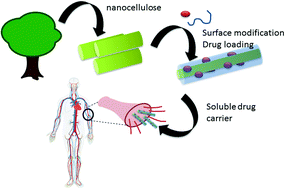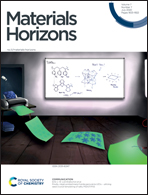Surface modified cellulose nanomaterials: a source of non-spherical nanoparticles for drug delivery
Abstract
Cellulose nanomaterials, often called nanocellulose, have created a lot of buzz as a renewable building block for new materials such as nanocomposites, aerogels and hydrogels to be used in many different areas such as packaging, batteries, environmental applications, sensors and food supplements. In the biomedical field, cellulose-based nanomaterials have widely been employed in tissue engineering, diagnostics, drug delivery and wound healing. The area of drug delivery has already been reviewed earlier focusing on cellulose-based formulations including nanoparticles, tablets, hydrogels, and aerogels. In this review, we discuss the use of soluble cellulose nanomaterials that can be used for intravenous (i.v.) administration. Cellulose nanomaterials are attractive carriers for this field as they naturally have a non-spherical shape. This review summarizes the recent advancements in the use of individual cellulose nanomaterials that can be modified with therapeutic agents or targeting ligands as drug delivery systems. To achieve this aim, surface modification is a quintessential step to generate water-soluble individual cellulose nanoparticles to ensure high solubility in blood serum and good protein repellency. The main focus of this review is to provide a summary of surface modification techniques ranging from the covalent attachment of small molecules to the grafting of polymers. We then introduce techniques to immobilize drug molecules onto the surface of cellulose nanomaterials before concluding with a future outlook.



 Please wait while we load your content...
Please wait while we load your content...